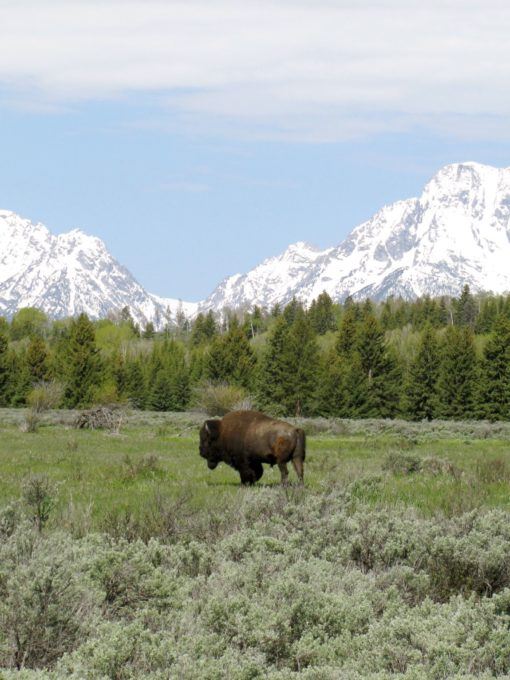
Bison and Mt. Moran, Bridger-Teton National Forest. Photo: Jeffrey St. Clair.
You wouldn’t expect someone who spent his entire life in high-rise penthouses to understand much about the stunning complexity of Earth’s natural environment and the millions of species that depend on what is called the interconnected “web of life.” And sure enough, while the Sixth Great Extinction is ongoing and accelerating, President Trump is changing the Endangered Species Act through administrative rules, not to rise to the challenge of stopping extinctions, but to make it easier for commercial and extractive enterprises such as oil, gas, mining, logging, ranching, road-building and development to actually exacerbate the rate of extinctions.
Every day we get more truly bad news about the state of Earth’s environment — from rising and warming seas to scorching droughts, ice caps melting, massive storms wreaking billions in damages, and ongoing deforestation that removes the planet’s best mechanism — trees — for fighting the overload of human-caused carbon dioxide in the atmosphere. Meanwhile, the planetary temperatures continue their inexorable rise, with July posting the hottest global temperatures ever recorded in more than 250 years.
There is general scientific consensus that a million species now face almost certain extinction and as technology has advanced, the planetary pillage has grown by leaps and bounds. Now the seas can be plundered by electronically locating schools of fish, which are then swept up in gigantic nets that capture both target and non-target species indiscriminately. Feller-bunchers roar through dwindling forests at an astounding pace, with one machine and operator doing the work that used to require dozens of loggers. Enormous tractors till vast factory farms, which are then drenched in herbicides and pesticides that both kill target and non-target species of plants and insects.
So what does Trump do in the face of these daunting challenges? Like everything else he’s done in his disastrous presidency, he’ll make it worse. The changes include gutting the “critical habitat” designation that is intended to preserve the habitat necessary for the recovery of threatened and endangered species. In short, if no members of the species are present on the land, in the rivers, or ocean, then it can’t be designated as critical habitat. When you consider the vast areas required by such species as salmon or bull trout for their annual spawning migrations, the change will basically ensure their extinction.
Trump will also alter the definition of “foreseeable future” in an attempt to discount the impacts of climate change, giving his political appointees the option to define how far into the future they look and only consider changes that are “likely” to occur according to their own desires.
Finally, adding insult to injury, Trump wants a “cost-benefit” analysis by his political appointees to determine whether or not it’s worth it to keep a species from extinction. Court actions are already being launched by states that note the Endangered Species Act specifically states: “Economic considerations have no relevance to the determinations regarding the status of species.”
It’s worthwhile to ask why anyone would knowingly drive millions of species to extinction. The sad truth is that Trump knows, as one of the least popular presidents in history, that his re-election chances rely on the economy. In his incredibly limited and poorly informed view, that’s best done by gutting regulations on industry — such as the Endangered Species Act — despite the long-term damages to the nation, the planet and humanity. We cannot survive once the complex “web of life” is broken and it’s long past time for our politicians and citizens to acknowledge that reality and stop the terminal insanity emanating from Trump’s White House.